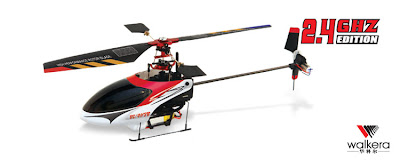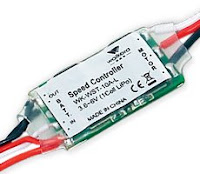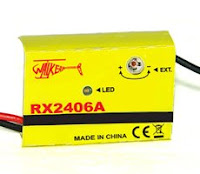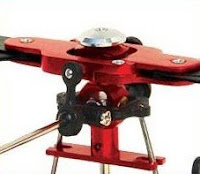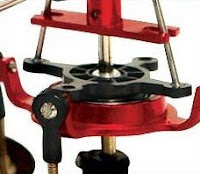Fact About Single Rotor RC Helicopter

A single-rotor R/C helicopter consists of a main and tail rotor. The 2 rotors work together to control the stability and maneuverability of the helicopter. Many pilots who are proficient in flying a dual-rotor or coaxial rotor R/C helicopters find single-rotor models a little different.
Beginners are not recommended to start with a single-rotor model because of its complexities. The pilot must have a complete understanding of important aspects such as applying throttle to the main rotor, maneuvering of the tail rotor, setting variable pitch to the blades and many more.
A flight simulator is highly suggested before diving into your first single-rotor helicopter adventure. It will give you the feel of an actual single-rotor experience without the hassles and troubles of crashing. That will definitely save you some money and time! Other training apparatus and crash kits can also aid you during your first few flights. A training gear is a set of equipment and supplies that is hitched up onto the landing skid to avoid severe damage. These are similar to carbon rods with orange ping pong balls mounted on ends.
Crash kits are basically spare parts readily available in case of a crash or any other smash up. Major parts and components: An R/C helicopter with a single-rotor generally has either a belt-driven or motor-driven rotor tail. A belt drive gives superior control though an electric motor is less expensive. The tail rotor has the responsibility of preventing the body from rotating against the directions of the main rotor blades. Basic models of single-rotor R/C helicopters have main rotor blades that do not change angle. This is referred to as Fixed Pitch (FP). On the on other hand, advanced types have the Collective Pitch (CP).
Helicopters with FP cost much lower but slower than CP helis. A single-rotor R/C helicopter consists of a main and tail rotor. The 2 rotors work together to control the stability and maneuverability of the helicopter. Many pilots who are proficient in flying a dual-rotor or coaxial rotor R/C helicopters find single-rotor models a little different. Cheap ready-to-fly (RTF) single-rotor helicopters come with ‘brushed motors’.
More sophisticated types have 'brushless motors'. This type requires a specific electronic speed controller (ESC) that increases the power and flight time significantly. Rotor heads and tail assemblies are usually made of either plastic computer numerical controlled (CNC) machined aluminum. Most professional aerobatic pilots prefer the CNC type because it results to smoother and more predictable flights if configured properly. It also enhances the helicopter’s appearance even if it adds to some weight and cost.
Other electronic components that may vary are the following: gyros, radios, servos, and speed controllers.A single-rotor R/C helicopter consists of a main and tail rotor. The 2 rotors work together to control the stability and maneuverability of the helicopter. Many pilots who are proficient in flying a dual-rotor or coaxial rotor R/C helicopters find single-rotor models a little different.
Facts about Dual-Rotor RC Helicopters Dual-rotor also known as coaxial rotors helicopters consist of a pair of rotors rotating in opposite directions. One rotor is positioned above the other. Coaxial helicopters are popular because of its clear stability while in flight making it easier to learn. It is also considered to be a favorite indoor activity compare to the single rotor model. Its maneuverability makes it ideal and safe even within one’s home.
 Underlying Theory
Underlying TheoryWhen a helicopter is not in motion its angular momentum is zero. Once the engine is started, it produces a significant amount of angular momentum that can cause the body of the helicopter to spin around in opposite direction of the rotors. To maintain flight stability, coaxial rotors are used by turning each rotor in opposite directions. This allows the fuselage to sustain a zero angular momentum. How does it work?
Coaxial helicopters do not necessarily need a tail rotor. The torque created by the 2 rotors spinning in opposite directions cancels each other. This results to a more stable flight and hovering capabilities. Hovering is one of the main elements in flying a helicopter. When the pilot slows down or speeds up one of the 2 rotors, he can control the hover or direction of the helicopter. Why go for a dual-rotor helicopter? Coaxial designs are remarkable because of its ability to maximize every available engine power. A tail rotor naturally throws away some of the power would have been used in lifting and thrusting. It also observed that most dual-rotor R/C helicopters have less noise.
Conventional R/C helicopters generate a loud “blowing” noise because of the interaction involving the flow of air between main and tail rotors. More and more coaxial helicopters available in the market these days consume less space making it a more compact model. Things to consider The speed of the rotors should be appropriately controlled and maintained. The stability of a coaxial R/C helicopter greatly depends on the 2 rotors’ synchronization such that any deviation may result to damaging effects.
Another downside is the possibility of the rotors getting into each other especially during extreme flight maneuvers. Recently, several R/C helicopters began adopting a simplified coaxial design. This new model consists of a coaxial unbending rotor system with fixed-pitch blades and a swashplate. One thing is clear, dual-rotor R/C helicopters are sure to make a wave in the next couple of years.
X-Micro Hobby






